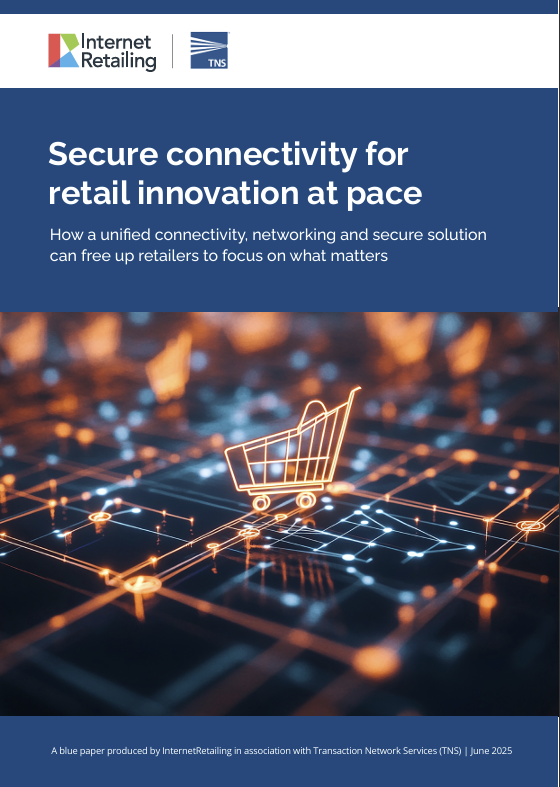Joe Farrell, VP of international operations at PFS, explains the impacts of over-packaging and how they can be avoided.
Damages and breakages throughout the ecommerce delivery chain, as a result of inadequate product packaging, is having a detrimental effect on retailers industry-wide. From the moment the product leaves the retailer, right up to the point it is received by the customer, packages will come into contact with a number of touch points where potential damage could be caused. Last year, in holiday season alone, ecommerce return shipments in the US totalled $32 billion; 20 to 30% of those returns were due to damages to the product.
Not only is inadequate packaging having a direct impact on the bottom line for brands, but it can also have a damaging effect on the relationship between a retailer and its customer, before it has even started. Consumers expect products ordered online to arrive quickly and in pristine condition. They also expect packaging to be sustainable and kind to the environment. Over-packaging a product can leave a brand open to criticism that they are wasteful and inconsiderate toward the environmental impact.
Damaged customer relationships
Packaging is the first tactile experience an eCommerce customer has with a brand so getting this right is vital for encouraging repeat purchases – returning customers spend as much as 67% more than first-time customers.
As an extension of the brand’s overall image, the aesthetics are an extremely important consideration for e-tailers and often acts as a key brand differentiator. In fact, a recent survey found that 76 percent of shoppers say packaging positively affected their perception of the retailer. This perception however, can quickly become a negative one if the product arrives damaged or broken and will soon result in the product being returned to the seller. Returns require repurposing, storing, or in some cases, destruction of the product. Sometimes it is a combination of all three. These are all additional services required by the brand, which can soon add up when dealing with a high volume of returns.
Strong and sustainable packaging solutions
In order to avoid the significant cost of returns, retailers must continually reassess the effectiveness of packaging across the supply chain, right through to delivery. Sustainable and innovative packaging solutions can be used not only to reduce packaging waste but also to provide packaging that effectively protects a product. New packaging initiatives such as distributed packaging models eliminate a number of packaging steps in the supply chain. The raw product is sent directly from the manufacturer in bulk to the fulfilment centre, and then repackaged into its inner carton before being put away. This allows brands to save money from the initial shipping to the fulfilment centre, reduce waste, and ensure the product arrives with the customer in the best condition possible. Right size packaging is another effective solution – by reducing air and void fill, retailers are able to minimise shipping costs and create a much sturdier packaging that greatly reduces damaged returns.
Choosing the perfect packaging
Whilst the strength and sustainability are both key considerations, retailers must also assess the assembly time when choosing an appropriate packaging solution. The time it takes to put together packaging will have a direct impact on workforce time, affecting ability and speed of processing orders. Complex packaging will take workers longer to put together, meaning brands will end up paying far more in wages than they would with a much simpler packaging design.
The pick/pack/ship cycle of the distribution centre must also be examined. Some products only require a single SKU – meaning the box they arrive in can be used to ship them out again – just by adding a shipping label. Whilst this is a high efficiency, cost effective solution, it requires the packaging used to be resilient, in order to survive the entire delivery/distribution chain.
For particularly fragile items, custom packaging solutions should be considered. For one leading pub, cider and beer company, shipping two different types of product in one box could be particularly complicated and the placement of dividers within the boxes dramatically slowed the pack-out process. To ensure products were adequately protected a custom box design was needed. Not only did this minimise movement during delivery, but it also sped up packing time and overall packing efficiency.
By continually assessing packaging effectiveness throughout the eCommerce supply chain, retailers across a range of industries can significantly reduce damages and in doing so, improve customer retention. Retailers who look beyond the point of purchase and focus on providing a complete end-to-end positive customer experience will be able to reap the rewards of increased brand loyalty and make significant cost savings as a result.
Read more: DHL takes part in reusable packaging scheme in Germany








